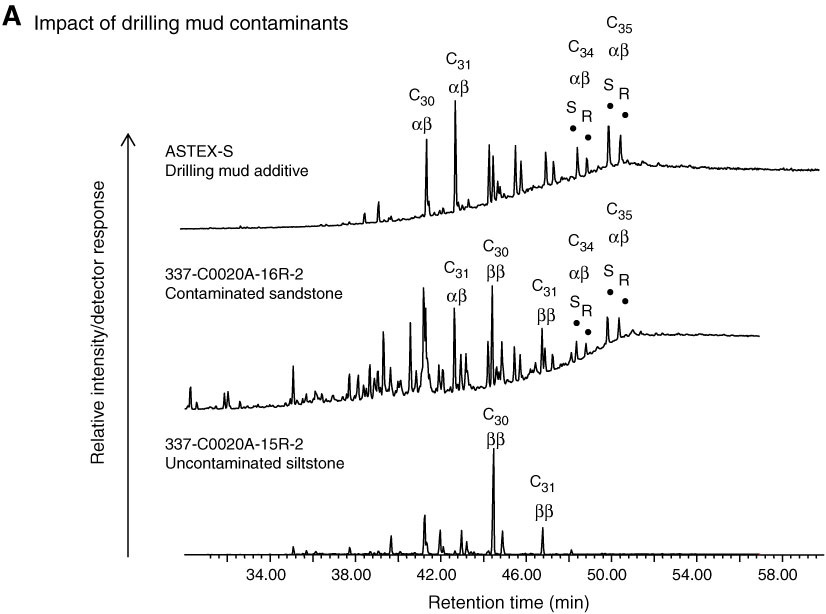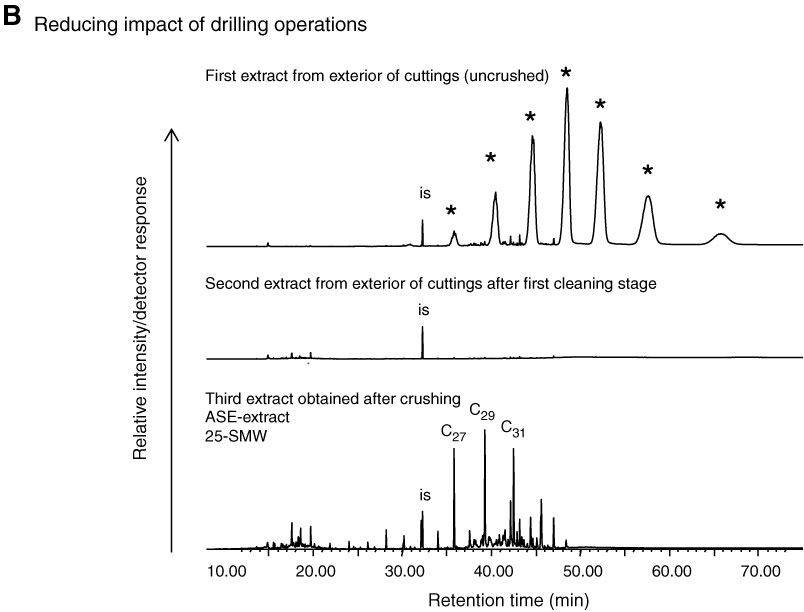
Figure F19. A. Biomarker contamination 2: m/z 191 ion chromatograms for ASTEX-S SAS (a drilling additive), the extract from a sandstone (Sample 337-C0020A-16R-2, 12–45 cm) and from a siltstone (Sample 15R-2, 0–21 cm). ASTEX-S SAS contains thermally mature hopanes; C29 and C30 αβ hopanes (hopanes with a 17α, 21β [H] configuration) and a distinctively high proportion of C35 22S and 22R hopanes relative to the C34 22S and 22R hopanes. A sample from a more contamination resistant lithology (a siltstone from Section 15R-2) contains C30 and C31 hopanes with the thermally immature 17β, 21β (H) configuration. The sandstone from Section 16R-2 contains a mixture of hopanes and has a hopane-fingerprint that is a mix of the indigenous formation and the infiltrated ASTEX-S SAS—both thermally mature and immature hopanes that would not be expected to be found together. B. Total ion chromatograms for sequential extraction of drilling cuttings. The extract from the exterior is dominated by drilling mud components (marked by *). After cleaning by sonication in solvent, a repeat extraction (second extract) yields far less organic matter, suggesting that the surface has been cleaned. The solvent extract obtained from the now clean sample after it has been crushed contains far less drilling components (Accelerated Solvent Extractor [ASE]-extract for cuttings Sample 337-C0020A-25-SMW). is = internal standard.


Previous | Close | Top of page